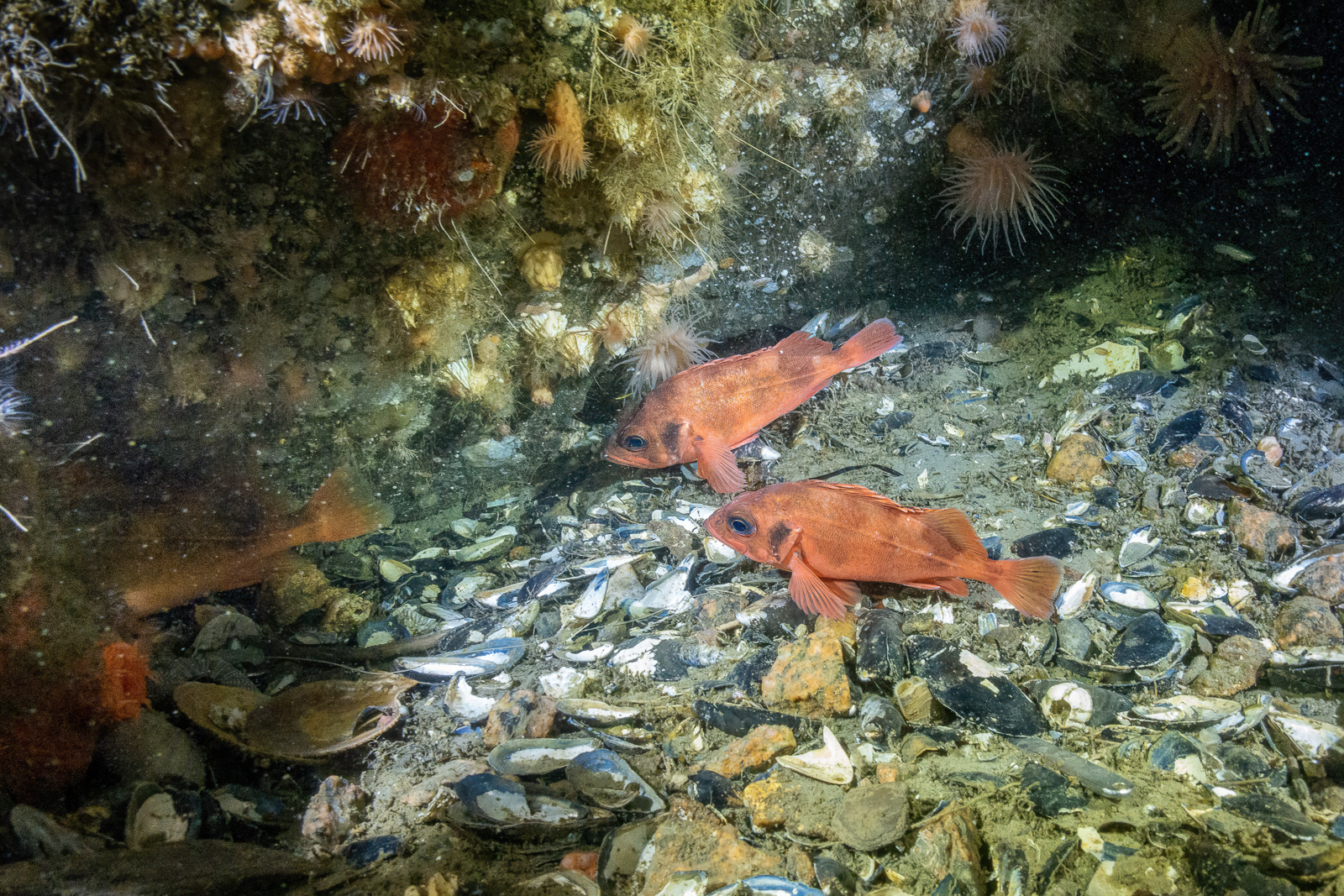
SIZE:
45 cm, up to 60 cm.
LIFE EXPECTANCY:
Up to 75 years.
LIFE CYCLE:
Sexual maturity is reached between 6 and 15 years of age.
Reproduction between male and female deepwater redfish takes place between September and December. The female keeps the fertilized eggs in her body until late spring. She then releases the hatching larvae. A female produces between 1500 and 107,000 larvae per reproduction cycle.
In their first year of life, deepwater redfish grow to a size of around 7 to 8 cm. Thereafter, they grow by 2.5 cm per year. After 10 years, their growth rate decreases.
A long, fragile life
Compared to many other species, deepwater redfish can live a long life. But to reach a venerable age, they grow slowly and mature late. These characteristics make them all the more vulnerable to intensive fishing, as the population will take longer to have new individuals that are ready to reproduce.
This species of fish has two large, bulging eyes. The lower jaw protrudes from its wide mouth. Its body is red, sometimes a little orange.
Its body, head and gills are filled with spines. It has a long, fan-shaped, spiny fin on its back.
Near the bottom, usually between 100 and 700 m depth, but can reach depths of up to 1400 m.
Deepwater redfish stay close to the bottom during the day and come up at night to feed.
PREYS:
Crustaceans
Shrimp
Small fish
PREDATORS:
Cod
Skates
Seals
MACHINES:
Trawling, ice fishing.
REGULATIONS:
The deepwater redfish industry has been under moratorium in the Gulf of St. Lawrence since 1995. Although it was declared an endangered species in 2010, it now must be re-evaluated; after its phenomenal decline, as of 2023, deepwater redfish may be one of the most abundant fish in the St. Lawrence. In fact, commercial fishing has been cautiously reopening since 2024, with small quotas being allocated to fishermen.
Latest research
Scientists from Fisheries and Oceans Canada have measured the mercury levels in the muscles of the deepwater redfish caught in the Gulf of St. Lawrence and the Laurentian Channel. The flesh of the smaller redfish, measuring 17 to 30 cm, contains 20 to 30 times less mercury than in larger fish. Therefore, eating them would not be harmful to human health.
Deepwater redfish is a Smarter seafood-listed species.
BENEFITS:
Deepwater redfish is an excellent source of omega-3 fatty acids, protein and vitamin B12.
LET’S COOK:
Tender, flaky texture. Mildy flavoured flesh. Turns from red to white during cooking.
OUR CULINARY ADVICE:
- If purchased fresh, deepwater redfish should have bright, unclouded eyes. Its body should be shiny. Flesh should be a translucent pinkish red.
- Be careful when cutting; their sharp spines can hurt.
- It is preferable to remove the skin, as it shrinks considerably during cooking.
- Its delicate flesh requires light cooking and seasoning. It is not suitable for all methods of frying, but in fish & chips, deepwater redfish is sure to please.
Redfish or rascasse?
In Europe, rascasse is often seen on restaurant menus. However, they are not the same species. Only Sebastes mentella can be called rascasse, and it must be specified as “Rascasse du Nord” (Northern racasse).






